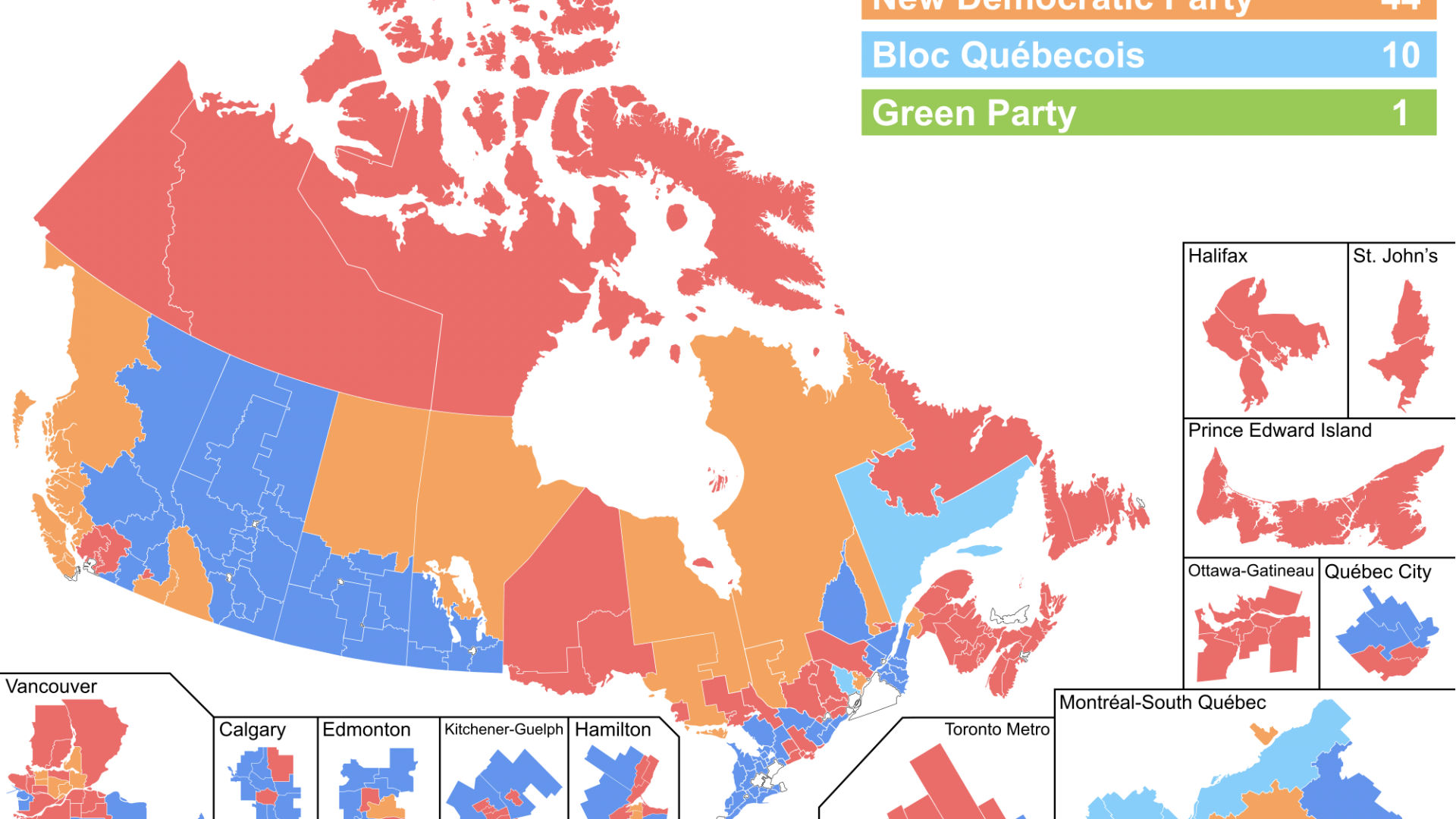Overview
In the last three modules, we have examined the three branches of government in Canada as well as the bureaucracy, which facilitates governmental policy. Now we will turn to the interface between government and the citizens constituted by three parts: political parties, advocacy groups, and elections. Each of these plays a distinct role in Canadian democracy. Political parties are vehicles through which both the electorate and government are organized. In terms of the electorate, political parties recruit candidates, organize campaigns, get voters on polling lists, and seek to turnout the vote. Parties are also instrumental to the functioning of government. After elections, the outcome of voting determines which political party will form government and who will become Prime Minister as well as which political party will form the opposition and who will be The Leader of Her Majesty’s Loyal Opposition.

Figure 8-1: Source: http://www.colinbennett.ca/wp-content/uploads/2012/05/Canadian_Political_Parties1.jpg Permission: CC BY-NC 2.5
Another important aspect of political parties are their respective political platforms. These policy platforms, while not determinative and even at times deceptive, do play an important role in shaping the direction of government. Citizens are able to influence these platforms by joining parties, participating in party conventions, leadership reviews, and leadership selection.
More recently, an increasing number of citizens have opted to try to influence government policy outside of such formal channels, opting instead to work through advocacy groups. Individuals elect to join or form groups seeking to influence how government acts and where they deploy their resources. These are questions that range from health care to foreign policy, from tax reform to immigration. Advocacy groups can represent narrowly defined interests such as specific industries or professions. Alternatively, they can also represent broader social movements, seeking change in the name of the public good.

Figure 8-2: “The Valiant Five – Advocates for Women’s Right to Vote” Source: https://commons.wikimedia.org/wiki/File%3AThe_Valiant_Five_Statue.jpg Permission: Public Domain. Courtesy of Thivierr.
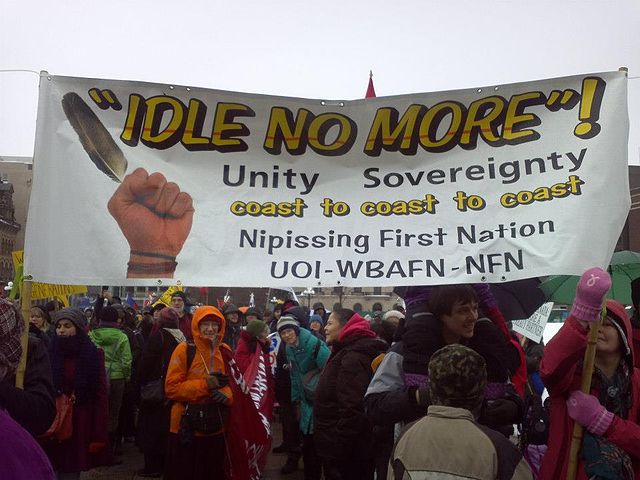
Figure 8-3: “Idle No More Movement” Source: https://en.wikipedia.org/wiki/File:Idle_No_More_2013_Ottawa_1.jpg#filelinks Permission: CC BY-SA 3.0. Courtesy of Moxy.
Finally, we will look at elections as an essential link between citizens and government, providing the fundamental basis of democracy in Canada. Elections are the contestation for executive power between political parties. The results of elections provide parties a mandate to implement their political platforms. These platforms and subsequent policy are the subject of intense pressure from advocacy groups. Therefore, understanding the form, function, and issues surrounding the electoral process in Canada is important to understanding democracy in Canada.
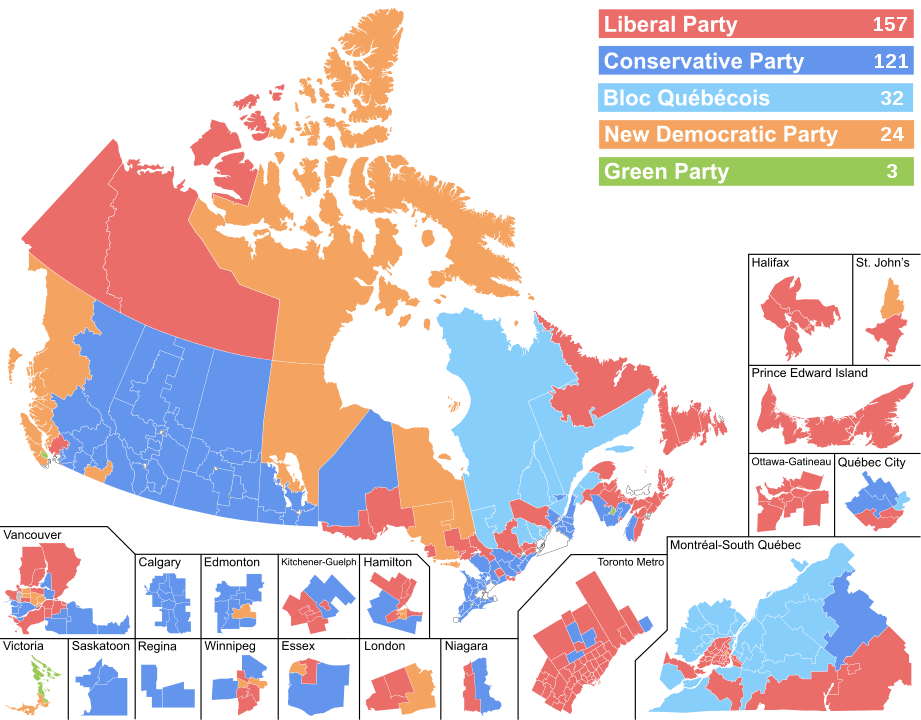
Figure 8-4: "Results of 2019 Federal Election" Source: https://commons.wikimedia.org/wiki/File%3ACanada_Election_2015_Results_Map_(Simple).svg Permission: By CC BY-SA 4.0 Courtesy of Tholden28.
When you have finished this module, you should be able to do the following:
- Describe the influence and structure of Canadian political parties
- Differentiate between the basic policy positions of the various parties
- Explain how interest groups try to influence government policy
- Discuss the pros and cons of the electoral system in Canada and possible alternatives
- Read Chapter 11 of the textbook ‘Parties and Interest Groups’
- Complete Activity 8.1
- Complete Activity 8.2
- Complete Activity 8.3
- Accessibility of voting
- Advocacy groups
- Bloc Québécois
- Brokerage theory
- Canadian Alliance Party
- Canada Elections Act
- Canada-US Free Trade Agreement
- Cadre parties
- Closed list
- Conservative Party of Canada
- Constituency
- Co-operative Commonwealth Federation
- Destructive party
- Elections
- Elections Canada
- Electoral impact
- Electoral riding
- Electoral system
- Environmentalist party
- First past the post
- Free trade
- Green Party
- Innovation Party
- Institutionalized groups
- Issue orientated groups
- Leader of Her Majesty’s Loyal Opposition
- Leadership conventions
- Liberal Party
- Limited government
- Lobbying
- Majoritarian
- Majority government
- Mandate
- Mass parties
- Meaningful election
- Minority government
- Mixed member proportional
- Narrow majority
- Natural governing party
- Natural opposition party
- NDP
- North American Free Trade Agreement
- One Member One Vote
- One-party dominant system
- Open list
- Pluralist theory
- Policy convention
- Political parties
- Text Book Chapter 11 “Parties and Interest Groups”
Learning Material
After having examined the broad structures of government in the past several modules, we are going to turn towards the linkages between government and the citizen. We want to think about how citizens are able to influence both the general direction of government as well as specific policy areas. Government policy direction is rooted in the platforms of respective political parties.
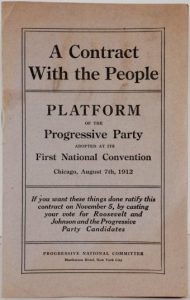
Figure 8-5: “The Progressive Party Platform of 1912” Source: https://commons.wikimedia.org/wiki/File%3APamphletFrontPageProgressivePartyPlatform1912.jpg Permission: Public Domain. Courtesy of US Progressist Party.
After having examined the broad structures of government in the past several modules, we are going to turn towards the linkages between government and the citizen. We want to think about how citizens are able to influence both the general direction of government as well as specific policy areas. Government policy direction is rooted in the platforms of respective political parties.
Political platforms are generated by a mix of ideas coming from the party leadership, the party membership, and the prevailing ideas in the broader population of the citizenry. Specifically, we will examine the organization of the party structure, how party leaders are chosen, and the means by which members are able to influence the core ideas of the party. A second and increasingly important means to influence specific government policy is through advocacy groups. Advocacy groups are constituted by individuals who share some interest or belief that motivates them to organize. Such groups can be narrowly self-interested, advocating on behalf of their membership for decisions that are materially beneficial to them. This type of advocacy is tightly connected to the field and practice of lobbying; whereby professional services are used to put pressure on the government for specific ends. While a legitimate activity, the amount of money involved has led to a negative perception of lobbying.

Figure 8-6: Source: https://www.flickr.com/photos/dhuiz/14681461476/ Permission: CC BY 2.0 Courtesy of Daniel Huizinga.
However, advocacy groups can also seek broader social change. These groups are often connected to social movements that organize around ideas of ‘what should be’ and pressure the government to move towards these ideals. However, it is important to note that this is not an either/or proposition. Rather advocacy groups should be seen as sitting on a spectrum between these two positions and at times they move along the spectrum. Finally, we will look at elections in Canada. Elections are the bedrock of a democratic society, providing legitimacy to the government. They are also the means by which citizens choose among various political party platforms as well as their respective leadership. If a party forms a majority government, elections have provided them a strong mandate to implement their platform. If a party has a narrow majority, forms a minority government, or there is regional imbalance in the electoral results, the mandate of the government is less clear. However, even in the case of a majority, there is some question as to the strength of the government’s mandate given Canada’s ‘first past the post’ (FPTP) electoral system. The FPTP system can produce a majority of seats without a majority of the popular vote. Therefore, we will look at how elections work in Canada as well as the contemporary debates around electoral reform.
Political parties are the principal actors in the electoral competition for executive and legislative power in a democracy. In Canada, success in this electoral competition is rewarded by political parties having the right to form government with their party leader becoming Prime Minister. If the party forming government is able to achieve a solid plurality of seats in the House of Commons, they are able to draft and pass most legislation. The only obstacles to their legislative agenda are the courts, the ability of the opposition to mount a public relations attack on the legislation proposed, and the government’s political assessment of the future electoral impact. However, in order to get to the ultimate goal of forming government, political parties need to lay some groundwork first and in so doing they play an important role in Canadian democracy.

Figure 8-8: “The Ideological Positioning of the Major Canadian Federal Parties” Source: https://en.wikipedia.org/wiki/File:Spectrum_of_Political_Parties_in_Canada_(Greens,_NDP,_Liberals,_Conservatives).jpg Permission: CC BY 3.0 Courtesy of Rdt~enwiki.
In order to become an officially recognized political party, they must register under the Canada Elections Act. It requires a membership of at least 250 people but then allows them to have their party listed with their candidate’s name on the ballot and gives them visibility. Functionally, political parties need to recruit a slate of candidates who share a relatively stable set of ideological goals. Parties need to support these candidates in setting up and running campaigns during elections. This requires local knowledge of electoral ridings across the country, building connections with constituents and getting to know their interests and concerns. This is accomplished by creating local party branches and recruiting party membership. More substantially, political parties contribute to shaping the democratic ideals of Canada through their political platforms. In building a slate of candidates and in consultation with their membership, political parties agree upon a political platform that differentiates them and their candidates from other political parties and candidates. In other words, they need to have answers to the issues raised by citizens that set them apart. The different political platforms created by different political parties, provide different options on how the country should be governed. Citizens assess these platforms on election day to give the party which forms government a mandate to lead. The unsuccessful parties, and in particular the official opposition, will use their own ideological positions and alternate platforms to critique government policy and to perhaps offer alternatives. In this capacity, political parties play an important role in political socialization by framing current political debates and shaping political culture. As discussed in module 2, political culture is defined as the broad patterns of values, beliefs, and attitudes in a society towards politics and political processes.
The study of political parties and the political party system in Canada has identified some dominant trends. The most persistent is the brokerage theory. It argues that both the Liberal Party and the various forms of the Conservative Party of Canada have few coherent ideological interests, but rather act as brokers of ideas selecting those that have the widest appeal and the likelihood of attracting electoral support. For some, this is both a necessity and a strength given Canada’s diversity. As discussed in module 2, Canadian diversity has many dimensions including: ethnic, geographic, economic, linguistic, cultural and socio-demographic to name but a few. With such diversity, it is argued that cobbling together an electorally successful mandate necessitates flexibility. Parties need to reconcile the shifting interests of different groups across the country. More than just a necessity, this is arguably a strength since political parties are fostering a national identity against regional parochial interests. However, the brokerage theory is also criticized for being morally bankrupt, since it lacks any ideological conviction other than getting power and maintaining it. This motivation is made clear during tenuous minority governments like that of Paul Martin’s Liberals between 2003 and 2006. The horse trading necessary to pass legislation and maintain the confidence of the house, led to a loosening of the party platform. Others see the brokerage politics of the Liberals and Conservatives as masking core capitalist values that each party has upheld to the detriment of other socio-demographics. The second big debate surrounding Canadian political parties concern whether it is a one-party dominant system, two-party system, or two-plus party system. The one-party dominant system thesis posits the Liberals are the ‘natural’ governing party of Canada since it has formed government for 69 out of 100 years in the 20th century. In this narrative, the Conservatives are considered the ‘natural’ opposition party which Canadians turn to for short periods of time when the Liberals were perceived as being too entrenched and lacking authentic connections to the wider population. Building on this model, the NDP has been labelled the ‘innovation’ party due its history of progressive politics which at times forces the Liberal political platform to the left. The Bloc Québécois has been labelled the ‘destructive’ party due to its commitment to Québec’s sovereignty. The Green Party struggles with the label of ‘environmentalist’ party, seeking recognition of its wider policy platform. The two-party thesis, on the other hand, posits that both the Liberals and the variants of Conservative Parties have formed government since Confederation in 1867. In fact, the first party to form government was conservative under John A. Macdonald. Supporters of this position also note the duration and importance of the Conservative governments of Diefenbaker, Mulroney, and Harper. As such, many Conservatives take umbrage at the notion that the Liberals are the ‘natural’ governing party. However, they agree that the NDP, the Bloc, and the Greens are clearly of a second order to the two primary parties. The two-plus party thesis posits that Canadian politics is diversifying and that political parties other than the Liberals and the Conservatives are playing an increasingly important role. While conceding the dominance of the Liberals and Conservatives in Canadian politics for most of the 20th century they note two trends that are contradictory to the one-party and two-party theses. First, the Bloc Québécois, NDP, Reform Party, and Canadian Alliance Party have all formed the official opposition. In the cases of the Bloc Québécois, Reform, and Alliance parties, this meant the Progressive Conservatives had been bumped into third position. In the case of the NDP, this meant that the Liberals had been bumped into third position. Second, and connected, both the Progressive Conservatives in 1993 and the Liberals between 2006 and 2011 had seemingly imploded. In 1993, the Progressive Conservatives went from holding a majority government to winning only 2 seats, a net loss of 154 seats. The number of Liberal seats declined through the elections held in 2006, 2008, and 2011. They went from a majority government to third place, losing 30, 18, and 43 seats respectively, finishing with 34 seats – the lowest in Liberal party history. Proponents of the two-plus party system see these trends as reflecting a disenchantment in the body politic and argue there is room for a third party to form government.

Figure 8-10: Source: https://www.conservative.ca/official-logos/ Permission: This material has been reproduced in accordance with the University of Saskatchewan interpretation of Sec.30.04 of the Copyright Act.

Figure 8-13: Source: https://www.greenparty.ca/en/party/logos-and-graphics Permission: This material has been reproduced in accordance with the University of Saskatchewan interpretation of Sec.30.04 of the Copyright Act.
While there is some debate on the systemic dimensions of Canada’s party system, the individual political parties do roughly share the same basic components. First, most compete in both the federal and provincial levels of government. However, there is a wide variance in the degree to which the federal and provincial parties cooperate. For example, the Parti Québécoise and Bloc Québécois are very tightly integrated whereas the BC Liberal Party and the federal Liberal Party have almost nothing in common. Moreover, there are significant provincial parties that do not have federal counterparts, including the contemporary Saskatchewan Party or the newly created United Conservative Party, formed by a merger of the Wildrose Party and the Progressive Conservative Party of Alberta. Others, like the Social Credit, have played a significant provincial role and tried to carve out space at the federal level but were unsuccessful. At the federal level, parties have two wings. The extra-parliamentary wing is composed of the national executive, standing committees, a permanent national office, provincial associations, and local constituency associations. The two wings are linked by the party leader who controls both.

Figure 8-17: Source: https://en.wikipedia.org/wiki/United_Conservative_Party Permission: CC BY 4.0 Courtesy of UCP.
The constituency or riding is the most direct linkage between the party and the citizenry. This is the geographical area where candidates seek to represent as MPs. At this level, parties operate constituency offices, but they are relatively small and play a minor role in the national machinery apart from at election time. The offices are coordinated by the provincial associations which may or may not coordinate with their provincial counterparts. At the top of the party hierarchy is a small permanent national office that is run by a small group of party elites who maintain the connections between the provincial organizations and MPs as well as organize party conventions, by-elections, and general elections.
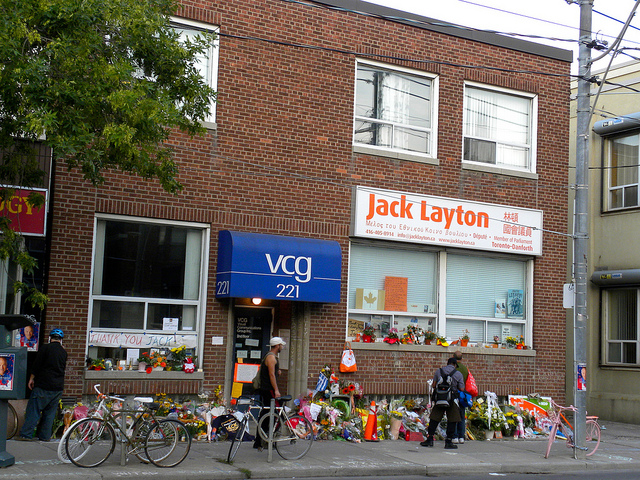
Figure 8-19: “Jack Layton’s Constituency Office” Source: https://www.flickr.com/photos/jasonparis/6094183911/ Permission: CC BY 2.0 Courtesy of JasonParis.
Second, there has been an evolution from cadre parties to mass parties in Canada, albeit with lingering differences between them. Historically, political parties like the Liberals or the Conservatives were considered cadre parties, financially supported by a few patrons who shared their ideological positions. As the franchise was extended, and social movements arose, new mass parties came into being such as the Co-operative Commonwealth Federation.
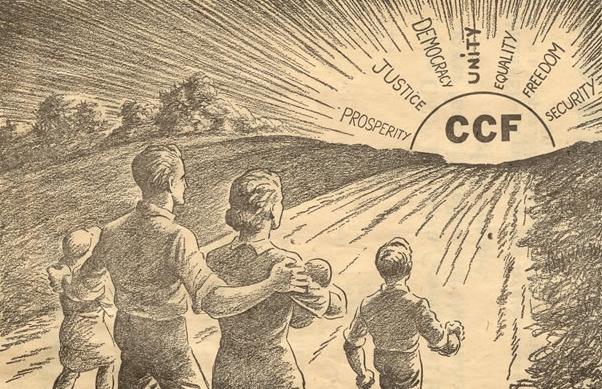
Figure 8-20: https://commons.wikimedia.org/wiki/File%3ATowards_the_Dawn.jpg Permission: Public Domain. Courtesy of The Cooperative Commonwealth Federation.
However, these groups largely lacked the financial resources that the cadre parties enjoyed. In order to acquire the resources to pursue their political goals, it was necessary to look outside the legislature and outside the small number of their own candidates who mostly lacked affluent financial backers. Instead, these groups looked to build a large membership base that could regularly contribute small sums to allow these mass parties to be able to function. A large membership requires a large organization which requires a tree like network that permeates local communities with local branches organized through a centralized hub. The success of mass parties, particularly their ability to build this tree like structure into the citizenry, required the cadre parties to respond. The cadre parties began to build their own connections to communities, creating their own membership that is external to the legislature. This has led to a blurring of cadre and mass parties. That being said, they still manifest important differences. Modern cadre parties still have strong top-down influences, especially on the policy platform. While the party membership may be consulted or have some say in the direction of policy, the consultation is often only that and the policies on which the membership have a say, are often pre-selected. Further, you can always follow the money! Modern cadre parties are often funded by fewer entities and members of the wealthy class. Conversely, the modern mass party still places significant authority with the membership to propose and approve policy positions, often in the lead up to and during, party conventions. One way to conceptualize the difference between the modern mass and cadre parties: the mass party is an agent of the membership while for the cadre party, the membership is a support base for the party. However, while parties have become increasingly connected with the wider community that does not mean the leadership has relinquished its influence and power. Party leaders still control the direction of the party. This partly helps to explain why the longer a party holds power, the more often they are perceived as disconnected from the citizenry.
Third, maintaining these tree like organizations requires adopting rules and procedures for their functioning. An important element of agreeing on these rules and procedures is the policy convention: a meeting of delegates from party constituency associations as well as the party’s legislators and party officials. The policy convention provides political parties with a degree of democratic credentials. It is here that the party membership can engage in debate over what the policy platform of the party should include, keep, and change. However, there is only a degree of democratic legitimacy conferred by policy conventions since they are not, nor were they intended to be, representative of the diversity of Canadians. Rather it is meant to coalesce support of the party faithful. Moreover, those who are elected are not bound by these decisions but there is an expectation that the wishes of the party membership will be recognized if/when they are elected. As PM Mackenzie King would argue, policy conventions provide the party leader a chart and compass to be interpreted as necessary to steer the ship of state.
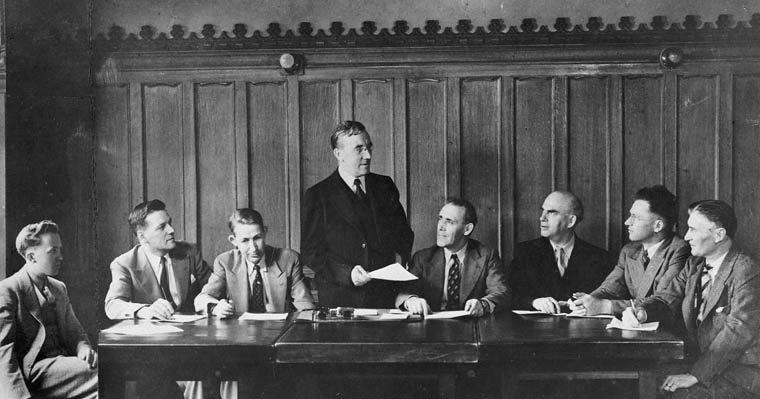
Figure 8-21: “CCF Party Cucus Meeting” Source: https://commons.wikimedia.org/wiki/File%3ACCF_Caucus_meeting.jpg Permission: Public Domain.
Leadership conventions provide the most meaningful method for the party membership to influence the direction of the party. Unlike other countries using the Westminster parliamentary model, Canada has adopted aspects of the American party convention as the vehicle to choose a party leader. Prior to 1919, parliamentary caucuses chose the party leader. However, the untimely demise of Sir Wilfred Laurier before the 1919 policy convention was taken as an opportunity by the Liberal party to have the first leadership convention. Two important organizing principles were created that still influence contemporary leadership conventions, albeit in altered forms. First, each federal constituency should have equal weight. This balanced out regional disparities. Second, the majority of delegates should be from the constituencies. One unintended consequence of the Canadian leadership convention is the ability to elect a relative outsider. For example, Mackenzie King, Louis St Laurent, Lester B. Pearson, and P.E. Trudeau were chosen over others with greater federal government experience. The Conservatives have chosen three provincial premiers, Bracken, Drew, and Stanfield, none of whom had even stood for election in parliament before becoming leader of the party. By the 1980s, leadership conventions had become tarnished, accused of being undermined by organizational rivalries, and stacked delegate meetings in constituencies. The Reform Party, as apropos given its name, introduced important changes to the leadership election by adopting universal participation. All the major parties would come to adopt either a direct One Member One Vote (OMOV) system or a modified proportional OMOV that also seeks to balance relative weight between ridings. The NDP leadership contest stands out as it has both a more complex candidate selection process and leadership vote. To be nominated, candidates have to have at least 500 signatures from party members; at least half of the signatures must be female-identified members; at least 100 must be from other equity seeking groups, LGBTQ or Indigenous people for example; and at least 50 votes must come from 5 designated regions: Atlantic, Québec, Ontario, the Prairies, BC, and the North. The election uses a preferential OMOV ballot but 25% of the vote is reserved for unions and other interest groups. The Liberals, Conservatives, and NDP have all had leadership conventions since 2014 with the current leaders being PM Justin Trudeau for the Liberals, Andrew Scheer for the Conservatives, and Jagmeet Singh for the NDP. All of whom won their respective contests on the first ballot.

Figure 8-22: “Jagmeet Singh” Source: https://www.flickr.com/photos/12973569@N04/23869024238/ Permission: CC BY-NC-SA 2.0 Courtesy of Obert Madondo.
Watch “How do Political Parties work?”
Use the following questions to guide a post to your Learning Activity Discussion Board.
- What role do political parties play in Canadian politics?
- How can citizens influence the political party’s policy platforms?
- Why are leadership conventions important?
- What are some of the weaknesses of political parties especially around the issue of party discipline?
The Conservative party was originally created as a cadre party to support the interests of social elites and in particular, business leaders. The early Conservative Party was staunchly protectionist economically and very pro-Britain and British Imperialism. The party was renamed the ‘Progressive Conservatives’ (PCs) between 1942 and 2003. During this time, the PCs changed their economic positioning, championing free trade, first negotiating the Canada-US Free Trade Agreement in 1988 and later the North American Free Trade Agreement in 1992. However, the party went into decline in the 1990s. Having been undermined by the Reform Party to their ideological right and strong competition from the Liberals, the PCs slid from a majority government to only 2 seats in the 1993 election. After a couple of attempts, and over the objections of some PC members, the PCs merged with the Canadian Alliance (formerly the Reform Party) to form the Conservative Party of Canada under Stephen Harper.
The new party was in favour of limited government, low taxes, deregulation of business, free trade, increased provincial autonomy, a more severe criminal system, and social conservatism. The Conservatives under Harper formed government from 2006 to 2015. After the defeat in 2015, Harper stepped down to be replaced first by Rona Ambose as interim leader and then Andrew Scheer as the head of the Conservative Party. After the Liberal Party formed government again after the 2019 election, Scheer was replaced by current party leader, Erin O’Toole.

Figure 8-23: Source: https://www.conservative.ca/official-logos/ Permission: This material has been reproduced in accordance with the University of Saskatchewan interpretation of Sec.30.04 of the Copyright Act.
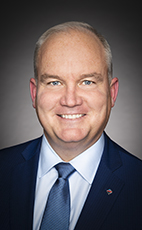
Figure 8-24: “Erin O’Toole” Source: https://www.ourcommons.ca/members/en/erin-o%E2%80%99toole(72773) Permission: CC0 1.0 Public Domain.
The Liberal Party of Canada has often described itself as the natural governing party of Canada and point to the fact it has formed government far more than any other. It was established under a diverse set of interests. Some were interested in opposing the business elite represented by the Conservatives. Others, particularly in Quebec, opposed the influence of the Catholic Church. Others wanted more democratic representation and still others, like those in the Maritimes who opposed joining Canada, sought a means to promote their interests at all. These diverse interests had unified by the 1880s. The early political platform strongly reflected classical liberalism with support for free trade, limited government, and provincial rights. However, its ideological positioning shifted towards the center as it became the party of national unity, having support in both English and French Canada, reinforcing their narrative of being the natural governing party. Under Pierre Trudeau, the party came 180 degrees, abandoning provincial autonomy and becoming an advocate for centralized authority in order to unify the regional and ethnic divisions in the country. Like the Conservatives, the Liberals experienced a sharp period of decline. From forming successive majority governments between 1993 to 2003, the Liberals managed an unstable minority government from 2003 to 2006. In 2006 they became the official opposition and in 2011 they were overtaken by the NDP, bumping them to 3rd position. However, despite predictions of their demise, the Liberals formed a solid majority government in 2015 under PM Justin Trudeau.

Figure 8-26: “Prime Minister Justin Trudeau” Source: https://commons.wikimedia.org/wiki/File%3AJustin_Trudeau_2016.jpg Permission: CC BY 2.0 Courtesy of Presidencia de la Republica Mexicana.
The New Democratic Party is a social democratic party that until 2011 had at best been the third largest party in Canada. However, in 2011 the NDP surpassed the Liberals to become the official opposition. The NDP is a result of the merger between the Co-operative Commonwealth Federation and the Canadian Labour Congress in 1961 under Tommy Douglas. The NDP has a strong social welfare mandate, building on the success of the CCF at the provincial level, including the Medicare plan in Saskatchewan. The NDP supported the Liberal minority government of Pierre Trudeau between 1972-74. The party fell behind the Bloc Québécois in 1993 and had little substantial success until the 2011 election when they became the official opposition under Jack Layton. However, while making a strong run against Harper’s Conservatives in 2015, the party leader Tom Mulcair was unable to attract the same support that Layton had cobbled together. This pushed them back into 3rd place after the governing Liberals and the Conservatives. Since then, Mulcair has stepped down and the NDP chose its new leader, Jagmeet Singh in October of 2017. Singh is the first visible minority to be chosen leader of a major federal party.

Figure 8-28: “Jag meet Singh” Source: https://commons.wikimedia.org/wiki/File%3AMPP_Jagmeet_Singh_at_his_annual_community_BBQ_in_2014_(cropped).jpg Permission: CC BY-SA 3.0 Courtesy of BGM Riding Association.
The Bloc Québécois is a federal party devoted to Québec nationalism and, to a greater or lesser degree overtime, Québec sovereignty. It was founded in 1990 by Quebec MPs who defected primarily from the Progressive Conservatives but also from the Liberals. The leader of this defection was Lucien Bouchard, a cabinet member in Brian Mulroney’s PC government. These MPs were angered over the failure to address Québec’s constitutional demands through the Meech Lake and Charlottetown accords and decided Québec sovereignty was the only means to go forward. The Bloc only contests seats in Québec and defends Québec’s interests at the federal level. The Bloc achieved its greatest electoral success in its first campaign in 1993, winning 54 seats, and became the official opposition. This provided the party a platform to pursue its separatist agenda. They campaigned with the Parti Québécois to support the 1995 Québec referendum. They reached their low point in 2011 when the NDP made serious inroads into Québec and the Bloc lost official party status having only won 4 out of the requisite 12 seats. In 2015, they more than doubled their seat count to 10, but still not enough to achieve official party status. Since March 2017, the leader of the Bloc Québécois has been Martine Ouellet
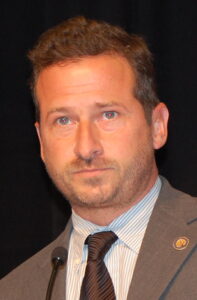
Figure 8-30: Yves-François Blanchet. Source: https://en.wikipedia.org/wiki/Yves-Fran%C3%A7ois_Blanchet#/media/File:Yves-Francois_Blanchet_in_October_2009.jpg Permission: CC BY 2.0. Courtesy of Mariannlï.
The Green Party was founded in 1983 to represent environmental policy. Since its founding, the party has sought to expand its policy platform to include human rights, social welfare, electoral reform, and foreign policy. The party has increased its influence as debates over pipelines and resource extraction has heated up. The party has also been innovative in campaigning, notably the decision for the leader Elizabeth May to tweet her way into the leadership debates in the 2015 election. The only Green MP is the party leader.

Figure 8-31: Source: http://a-proper-blog.blogspot.ca/2010/08/ Permission: This material has been reproduced in accordance with the University of Saskatchewan interpretation of Sec.30.04 of the Copyright Act.
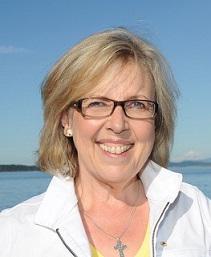
Figure 8-32: “Elizabeth May” Source: https://commons.wikimedia.org/wiki/File%3AEmay_photo.jpg Permission: CC BY-SA 4.0
While political parties play an important role in shaping the political culture of Canada, and by extension the form and function of our democracy, many individuals prefer to organize through other means. For some, political parties at the constituency level are just too far removed from the center of decision making to justify the effort of getting involved. For others, they are more committed to specific issues than to the ideological platforms of political parties. In such cases, advocacy groups provide an alternate means to get involved in political issues. Advocacy groups range in their respective forms but they all organize in order to influence government decision making and public policy outcomes. Some advocacy groups are more narrowly self-interested, organizing around issues and policies which have direct material impact on their membership. Examples of such groups include those which represent producer interests, like the energy sector or the dairy industry. Others represent professional occupations like the Canadian Medical Association or the Canadian Bar Association.
On the other hand, some advocacy groups are more public minded, seeking benefits that accrue to society as a whole or to segments of society that they believe are vulnerable or facing discrimination. These groups are often part of larger social movements that seek to change fundamental principles of society. Examples of such groups include Idle No More, Amnesty International, or Mothers Against Drunk Drivers.
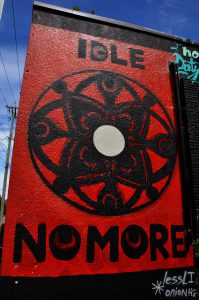
Figure 8-35: “Idle No More” Source: https://flic.kr/p/nTdAiD Permission: CC BY-NC 2.0 Courtesy of Lotus Johnson.
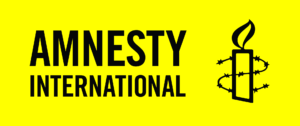
Figure 8-36: Source: https://upload.wikimedia.org/wikipedia/en/2/29/AmnestyInternationalLogo.jpg Permission: This material has been reproduced in accordance with the University of Saskatchewan interpretation of Sec.30.04 of the Copyright Act.
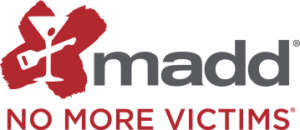
Figure 8-37: Source: https://en.wikipedia.org/wiki/Mothers_Against_Drunk_Driving Permission: This material has been reproduced in accordance with the University of Saskatchewan interpretation of Sec.30.04 of the Copyright Act.
Both sets of groups can be separated into two broad categories, issue orientated groups and institutionalized groups. Institutionalized groups have a formal organization with a paid staff, a permanent office, and membership. They monitor government policy, report back to their membership on developments, and wage information campaigns in the public media to develop awareness and sympathy for their members’ concerns. They also develop relationships with relevant government departments, political figures, and other stake holders. They have expertise in the range of issues they are concerned with and are therefore seen as legitimate representatives in particular fields. Issue oriented groups on the other hand, often arise due to more narrowly defined issues like neighbourhood zoning changes or building an arena/stadium for a local sports team. They arise more spontaneously in response to these external triggers. They are often temporary, disappearing after an issue is resolved. However, they can also morph into an institutionalized group if participants see value in organizing for a longer period of time or to tackle a broader range of issues.
In a liberal democracy, such interest groups play an important role as an interface between government and society. The pluralist theory of interest groups argues there are many centers of power in society, and that a state’s public policy reflects the conflict, cooperation, and compromise of independent interest groups with the government. From this perspective, government regulates the tension between such disparate centers of power in society and this is reflected in the government’s policy agenda. As such interest, or advocacy groups perform several important functions. They can be an important means of communication between the government and society. Importantly this communication flows both ways, from government to society and vice versa. They can play a mediation role between stakeholders and the government. They are able to articulate opinions on specific policy areas with more depth than the general public and provide the government policy options. They provide political representation for specific groups and can play a significant role in the electoral process.
Read the following News Article:
Global News – Tanker ban bill: What it means, who is for and against it, and what’s next
Read the following news releases:
Sierra Club BC – “VICTORY! BILL C-48 AND C-69 ARE PASSED!”
Answer the following questions in a post to your Learning Activity Discussion Board.
- What is Bill C-48?
- What does the Canadian Association of Petroleum Producers think of C-48?
- What does the Sierra Club think of C-48?
- Applying the pluralist theory of interest groups, what differing interests in Canada are conflicting over C-48, and what role have interest groups played in that conflict?
For most people, elections are the minimum requirement of any state to be considered a democracy. However, not all elections in all states are equal. It is important to assess whether elections are meaningful to the pursuit of democracy. To begin speaking of meaningful democratic elections, we need to understand what defines ‘meaningful’ and by what standards we use to judge elections as meaningful or not. A meaningful election is one where citizens have actual choice over who will govern in their name; where once elected, those who have been given a mandate to govern have real power to try and actualize their policy platform; where voters are free of intimidation and coercion; where no one is barred from running for office nor from voting. While Canada does pretty well on these metrics, they are far from perfect. There are issues with the actual elections: access for people who live in rural or remote regions, access for people with disabilities, identification requirements for voting, knowledgeable local volunteers, et cetera. There are also issues with more systemic aspects of elections: how different are the parties? How representative are their respective policy platforms? Who is disenfranchised? So, let us turn to some variables that assess how meaningful elections are.
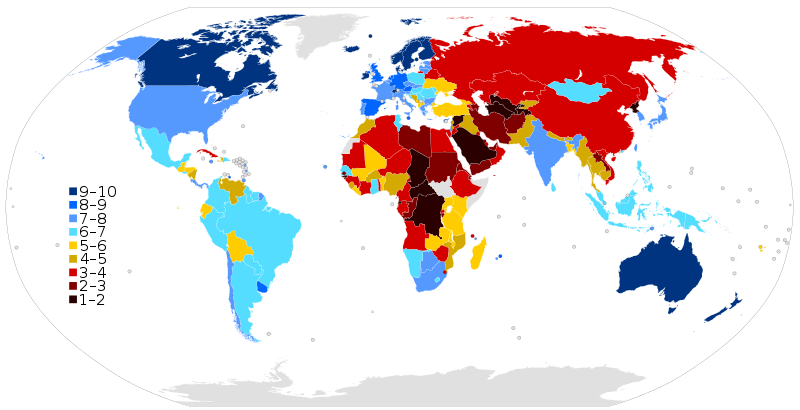
Figure 8-38: “Dark Blue = Most Democratic Black = Least Democratic” Source: https://commons.wikimedia.org/wiki/File%3AEconomist_Intelligence_Unit_Democracy_index.svg Permission: CC BY-SA 4.0 Courtesy of Kamalthebest.
The first metric of a meaningful election is universal suffrage: the right of all adult citizens to vote regardless of such characteristics as gender, ethnicity, wealth, or education. More than simply the legal right, universal suffrage can also be judged on the accessibility of voting. In other words, even if you have the right to vote, are there obstacles to your exercise of that right? A good example of this is voting by First Nations in Canada. Status Indians have had the right to vote since 1960 when section 14(2) of the Canada Elections Act was amended.

Figure 8-39: Source: http://data2.archives.ca/ap/a/a123915.jpg Permission: This material has been reproduced in accordance with the University of Saskatchewan interpretation of Sec.30.04 of the Copyright Act.
Prior to this, voting would have meant a loss of status. It is hard to quantify First Nations voter turnout since Elections Canada does not collect information which identifies ‘Indigenous voters’. However, indirect measures have been used including polling and aggregating votes from reserves. According to Elections Canada, the numbers demonstrate a 17.4% gap between On-Reserve and National turnout rates between 2004 and 2011. It should be noted that this gap was reduced to 4.5% in 2015 and will be a subject of much research in the future. However, given the trend lines, we can conclude that although there is a right to vote, the exercise of that right is somehow historically impeded. Factors used to explain this gap include: legal issues, such as identification requirements; issues of relevancy, such as whether political platforms speak to First Nations concerns; issues of identity, for example debates on whether First Nations can simultaneously participate in elections for the federal government and advocate against assimilation policies by that same government; as well as physical issues, such as the degree to which remoteness can limit access to polling stations. This relationship is one instructive example of challenges to universal suffrage in Canada. Others include access for people with disabilities, people with identification issues such as the homeless or even students, and rural voters.
The second metric of a meaningful election is information: can political parties and candidates get their message out to voters? And is the respective ability of parties relatively equal? In order to facilitate a degree of equality, spending limits can be used. Another debate around equality is whether the state itself should limit and subsidize, or outright pay, for campaign/election costs. Media coverage should strive for neutrality and provide meaningful coverage, though this can be notoriously hard as anyone who has read certain newspapers in Canada can attest. However, the most controversial issue around information and campaigning is government advertising. There are limits on government advertising during a campaign. However, in the contemporary world of the ‘continual campaign’, parties can and do use government resources between elections to promote themselves and implicitly denigrate their opponents.
Independent commissions are another important contributor to fair and free elections. These commissions oversee the campaigns and ensure the rules are being followed. Issues around finance, campaigning, and perhaps most importantly the collection and counting of ballots in an election. In Canada this role is filled by Elections Canada. The role of Elections Canada became contentious in 2014 when the Chief Electoral Office Marc Mayrand sparred with the Government of Stephen Harper over Bill C-23, The Fair Elections Act. Mr. Mayrand was worried about several aspects, in particular: the higher identification threshold which could disenfranchise the aboriginal voters, youth, poor, and marginalized communities; blocking Elections Canada from advertising to get out the vote; and the attempt to bring Elections Canada under political control.
The final metric to judge whether an election is meaningful is its timing: are elections held regularly and in a predictable manner. In all western representative democracies, elections are regular and many of these states seek to be perceived as being increasingly predictable. Since 2007, Canadian federal elections are supposed to be held on the third Monday of October every four years. However, this is a bit more ‘aspirational’ because Canada has a parliamentary system. In a parliamentary system, the governing party must hold the confidence of the house and therefore the governor general must hold the discretionary power to dissolve parliament and call an election early if that confidence is lost. It has also been controversial, since this ‘aspirational goal’ was adopted by the Conservative Government of Stephen Harper and yet was violated by his government in 2008, two years after the last election.
Another important issue surrounding elections in Canada is electoral reform. Electoral systems are judged by the degree to which the system: produces results that accurately represent votes cast to seats won; representatives are linked to their constituents; holds government accountable; and demonstrates the legitimacy of the authority being wielded by the government. Before we start, let’s think about this in the Canadian context. In the 2015 election, the Liberal Party under Trudeau won a substantial majority, controlling 184 out of 338 seats. However, the Liberals only captured 39.47% of the vote. In 2011, the Conservatives under Harper won a majority government with 166/308 seats but only 39.62% of the vote. The 1987 provincial election in New Brunswick is even more skewed, winning 100% of the seats with 60.39% of the vote. Alternative electoral systems have been discussed as a means to address these discrepancies. To frame this discussion, we will discuss the four broad electoral systems: majoritarian, proportional representation, mixed member proportional, and single transferable vote electoral systems.

Figure 8-40: “Electoral Systems” Source: https://flic.kr/p/uTxxMa Permission: Public Domain. Courtesy of Laurel L. Russwurm.

Figure 8-41: “Guelph Rally on Electoral reform” Source: https://flic.kr/p/S3Fhsp Permission: CC BY-SA 2.0 Courtesy of Ryan Hodnett.
Majoritarian electoral systems are defined as the election of one candidate per riding based on who won the most votes. It comes in variety of forms. In Canada, we use a form of the majoritarian electoral system called first past the post: a system in which voters in each electoral district elect a single representative to the legislature. The candidate with the most votes is elected, even if that candidate did not receive the majority of the votes. The strength of FPTP is that it is simple and facilitates a closer relationship between the elected representative and their constituents, partly due to its simplicity. However, there also three main weaknesses. The first weakness, as noted above, FPTP often generates majority governments but with far from a majority of the votes. The second weakness is that the legislature once formed under the FPTP system does not represent the choices of the polity cumulatively. For example, in 2015, 3.45% of voters preferred the Green Party but they only won one seat whereas 4.66% of voters preferred the Bloc who took 10 seats. And finally, the third weakness is that the system gives an enormous advantage to the mainstream parties and creates obstacles for new parties to gain a foothold. These skewed results have led to calls for electoral reform in Canada.
Other countries use a variation of the majoritarian electoral system. One prominent example are runoff elections: if no candidate receives a majority of votes, another round of voting is held, often with only the top two candidates on the ballot. This ensures that one of the two candidates will have a majority of the votes. France uses runoff elections and it can cause a significant amount of drama as was the case in the runoff election in 2017 between the En Marche! candidate and winner Emmanuel Macron and the hard right National Front candidate, Marine Le Pen. Another variation of the majoritarian electoral system is the preferential ballot: a system in which voters rank candidates in order of preference. If no candidate has a majority of first preference, the candidate with the least votes is dropped and the second preference of those who had voted for the dropped candidate are added to the tabulation of votes. This is an iterated process until one candidate has a majority.
The second electoral system is proportional representation: a system in which the proportion of votes a party receives reflects the proportion of seats the party obtains. PR consciously seeks to counter the skewing that occurs under a majoritarian system. For example, in the 2015 Canadian federal election under SMP, the seats broke down thusly:

Figure 8-42: “2015 Canadian Federal Election seat break down” Permission: Courtesy of course author Real Carriere, Department of Political Studies, University of Saskatchewan.
The only party not to gain would have been the Liberals and had the election used PR, they would have not had a majority government. This might explain their failure to live up to the promise of electoral reform. Under PR there must be multiple seats per riding, with more seats equalling better representativeness. For each riding, lists of candidates are generated for each party. These lists can be open or closed. An open list will allow voters to choose both the party and the candidate they prefer from that party. A closed list will allow voters to only choose the party. The number of candidates from each list who ‘win’ and become elected officials, depends on the percentage of votes their party receives. A concrete example: Riding Echo has 10 seats. Party A receives 60% of the vote, Party B receives 20% of the vote, Party C receives 10% of the vote, and Party D receives 10% of the vote. If there are 10 seats: A=6, B=3, C=1, D=1. If the list is closed, Party A will take the first 6 candidates on its list, Party B will take 3, and so on. If the list is open, Party A takes the 6 candidates from the list with the most votes, Party B will take 3, and so on. The benefit of PR is that the legislature closer reflects the democratic will of the people and makes room for smaller parties with pockets of support. It also better represents minority groups and women. The debatable disadvantage of the PR system is that it facilitates smaller parties and new parties to capture more of the seats in the legislature which often results in a coalition government: a form of government in which two or more parties jointly govern, sharing cabinet positions. It also weakens the connection between elected officials and their constituents, particularly in a closed list system.

Figure 8-43: “Translating votes into seats” Source: https://flic.kr/p/KwqVbE Permission: CC BY 2.0 Courtesy of Laurel L. Russwurm.
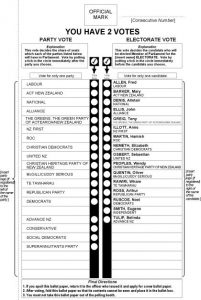
Figure 8-44: https://commons.wikimedia.org/wiki/File%3ANew_Zealand_MMP_voting_paper.jpg Permission: Public Domain. courtesy of New Zealand Parliament.
The third electoral system is the mixed member proportional system: a system in which some legislators are elected to represent particular electoral districts based on gaining the most votes in that district while others are elected based on the popular vote received by their party. In other words, it is mixing a form of systems like FPTP and PR. Voters still choose their preferred candidate as we do in Canada today under FPTP but the imbalance that it generates is balanced by PR seats so that the seats in the legislature roughly match the popular vote. The strength of MMP system is that it tries to facilitate the connection between elected officials and their constituents while avoiding the skewed representation generated by the FPTP system. MMP has two weakness. The first weakness is that it can seem confusing and opaque: you are voting for someone you know but perhaps up to half of the elected officials were possibly chosen by the party alone. The second weakness is that it requires either large ridings or a large legislature to accommodate the number of elected officials needed to achieve parity with the popular vote.
The final electoral system we will be looking at is the single transferable vote: an electoral system in which voters rank their order of preferences for candidates in a multimember electoral district. Candidates who receive a predetermined portion of the vote are declared elected. The second preference of a voter that is surplus to what that winning candidate needs is then transferred to that voter’s second preference candidate. The process repeats until all seats in the district are filled. The advantage of using the STV is twofold. First, it focuses voters on the candidate versus the party since it will often be the case that more than one member from each party will be running in the same multimember riding. Second, STV promotes competition between the candidates including those from the same party, allowing a more nuanced candidate selection even within one party. For example, perhaps you are a very dedicated Conservative voter but dislike the candidate in your riding. In a FPTP or even a closed list PR system, you will have to decide what is more important to you, the party or the candidate. In STV, you may have the choice of which Conservative candidate you want to vote for and those candidates will have been encouraged to differentiate themselves from the other candidates in the party as they are in competition. However, a serious disadvantage of STV is its complexity with formulas to determine the quota and shifting of surplus votes after each round. STV was the system put to a referendum in BC twice, both in 2005 and 2009, but did not meet the 60% threshold necessary for approval.
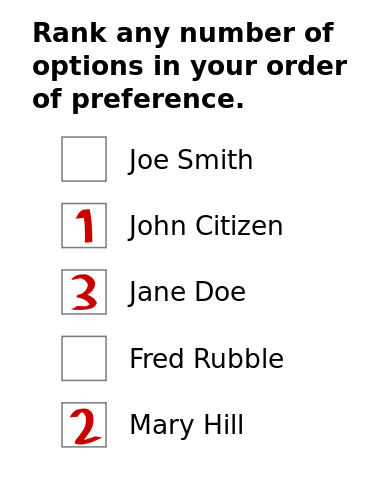
Figure 8-45: Source: https://commons.wikimedia.org/wiki/File%3APreferential_ballot.svg Permission: CC-BY-SA-3.0 Courtesy of Rspeer.
Read the following article: https://theconversation.com/what-the-canadian-election-results-would-have-looked-like-with-electoral-reform-125848
In a post to your Learning Activity Discussion Board, answer the following questions:
- What problems exist with the First Past The Post electoral system?
- What reforms have been proposed, and what improvements would they bring?
- Why do you think there hasn’t been any successful electoral reform in Canada?
Understanding the form and function of political parties, advocacy groups, and elections connects Canadian politics in the abstract to the citizenry. Political parties organize both the electorate and government. In terms of the electorate, they recruit candidates, organize campaigns, get voters on to polling lists, and seek to increase voter turn out. In terms of government, political parties form government and the official opposition. The political platforms of parties are decided by the party leadership after consultation with the party faithful and often contextualised by current political issues. These platforms both provide the electorate with a range of positions to vote on and set the general direction of the government if they form government. However, an increasing number of people find involvement in political parties too distant to the real centers of power, in Ottawa and provincial capitals like Regina. Others are less interested in broad political ideologies and more interested in specific issues. This has led to increased participation in advocacy groups. These groups seek to influence existing and new public policy either through narrowly defined interest groups or broader social movements. Finally, elections are the minimal condition to confer political legitimacy. It is the means by which citizens give a mandate to a political party to implement their political platform. These platforms are intensely debated not just by the general public but also by advocacy groups that seek to influence the direction of policy both before and after elections. Therefore, it is important to understand how the electoral system works, the problems with the current system, and what other options exist.
Review Questions and Answers
Glossary
Accessibility of voting: The extent to which obstacles to a place or activity have been removed. As such, Elections Canada has made an effort to ensure that voting at a federal electoral event is accessible to all. For example, all election day polling places, with only a few exceptions, have level access. Voters who are unable to mark the ballot can receive help. There is a voting template for persons with a visual disability. All advance poll sites have level access.
Advocacy groups: Also known as pressure groups, lobby groups, campaign groups, interest groups, or special interest groups, use various forms of advocacy in order to influence public opinion and/or policy. They have played and continue to play an important part in the development of political and social systems.
Bloc Québécois: Is a federal political party in Canada devoted to Quebec nationalism and promotion of Quebec sovereignty. The Bloc was formed by Members of Parliament who defected from the federal Progressive Conservative Party and the Liberal Party during the collapse of the Meech Lake Accord.
Brokerage theory: Maintains that the two oldest parties in Canada have few coherent ideological interests, but rather act as brokers of ideas, selecting those that have the widest appeal and the best likelihood of attracting electoral support.
Canadian Alliance Party: Was created from the remains of the former Reform Party of Canada at a convention in Ottawa in January of 2000 in an attempt to merge conservative opposition to the Liberal Party.
Canada Elections Act: Is an Act of the Parliament of Canada, which regulates the elections of members of parliament to the Canadian House of Commons.
Canada-US Free Trade Agreement: Was a trade agreement established between Canada and the United States on October 4, 1987 and signed by the leaders of both countries on January 2, 1988. The agreement phased out a wide range of trade restrictions in stages over a ten-year period, and resulted in a great increase in cross-border trade. With the addition of Mexico in 1994 the FTA was superseded by NAFTA.
Cadre parties: Refers to parties dominated by politically elite groups of activists. Historically, political parties like the Liberals or the Conservatives were considered cadre parties, financially supported by a few patrons who shared their ideological positions.
Closed list: A closed list will allow voters to only choose the party.
Conservative Party of Canada: The Conservative party is the oldest party in Canada, originally created as a cadre party to support the interests of social elites and in particular business leaders. The early Conservative Party was staunchly protectionist economically and very pro-Britain and British Imperialism.
Constituency: A geographical area that elects one MP and is the locus of the local organization of political parties; also known as a riding.
Co-operative Commonwealth Federation: Was founded in Calgary in 1932 as a political coalition of progressive, socialist and labour groups that wanted economic reform, to help Canadians affected by the Great Depression.
Destructive party: The Bloc Québécois has been labelled the ‘destructive’ party due to its commitment to Québec’s sovereignty.
Elections: An election is a formal group decision-making process by which a population chooses an individual to hold public office.
Elections Canada: A government agency that administers elections and is responsible solely to the House of Commons.
Electoral impact: Refers to assessments made by political parties on how specific policies will impact future elections. In a strong majority government, assessments of electoral impact are one of the few checks on legislative power.
Electoral riding: An electoral district in Canada, also known as a "constituency" or a "riding", is a geographical area that elects one MP.
Electoral system: Refers to the means by which votes cast for candidates are translated into legislative seats.
Environmentalist party: The Green Party struggles with the label of ‘environmentalist’ party, seeking recognition of its wider policy platform.
First past the post: A system in which voters in each electoral district elect a single representative to the legislature. The candidate with the most votes is elected, even if that candidate did not receive the majority of the votes.
Free trade: Free trade is a policy followed by some international markets in which countries' governments do not restrict imports from, or exports to, other countries
Green Party: Is a federal political party in Canada that was founded in 1983. Its broad and multi-issue political platform reflects its core values of ecological wisdom, social justice, grassroots democracy and non-violence.
Innovation Party: The NDP has been labelled the ‘innovation’ party due its history of progressive politics which at times forces the Liberal political platform to the left.
Institutionalized groups: Institutionalized advocacy groups have a formal organization with a paid staff, a permanent office, and membership. They monitor government policy, report back to their membership on developments, and wage information campaigns in the public media to develop awareness and sympathy for their members’ concerns. They also develop relationships with relevant government departments, political figures, and other stake holders. They have expertise in the range of issues they are concerned with and are therefore seen as legitimate representatives in particular fields.
Issue orientated groups: Issue oriented advocacy groups often arise due to more narrowly defined issues like neighbourhood zoning changes or building an arena/stadium for a local sports team. They arise more spontaneously in response to these external triggers. They are often temporary, disappearing after an issue is resolved. However, they can also morph into an institutionalized group if participants see value in organizing for a longer period of time or to tackle a broader range of issues.
Leader of Her Majesty’s Loyal Opposition: The leader of the party with the second-largest number of seats in the House of Commons.
Leadership conventions: Are meetings of party members to select a leader of the party.
Liberal Party: Is the oldest federal political party in Canada and has held power more than any other party in the 20th century. It often touts itself as the ‘natural governing party’ of Canada. The Liberal Party is often considered a brokerage party, shifting with the prevailing winds of political context rather than holding to a strong set of ideological positions. Currently, the Liberals are strongly supportive of unrestricted abortion, LGBT rights, and high rates of immigration, but also favour a free market economy that is not subject to overly burdensome regulation.
Limited government: Is where governmental power is restricted by law, usually in a written constitution. It is a key concept in the history of liberalism. The Magna Carta and represents an important milestone in the limiting of governmental power.
Lobbying: Activity aimed at securing favourable policy decisions or the appointment of specific government personnel.
Majoritarian: Majoritarian electoral systems are defined as the election of one candidate per riding based on who won the most votes. It comes in variety of forms. In Canada, we use a form of the majoritarian electoral system called first past the post.
Majority government: Is a government formed by a governing party that has an absolute majority of seats in the legislature or parliament. If a party forms a majority government, elections have provided them a strong mandate to implement their platform.
Mandate: The support for the policy platform of the political party which forms government, the strength of which is measured by the number of seats the party holds.
Mass parties: Unlike cadre parties, mass parties, unite hundreds of thousands of followers, sometimes millions. But the number of members is not the only criterion of a mass-based party. The essential factor is that such a party attempts to base itself on an appeal to the masses. It attempts to organize not only those who are influential or well known or those who represent special interest groups but rather any citizen who is willing to join the party.
Meaningful election: Is one where citizens have actual choice over who will govern in their name; where once elected, those who have been given a mandate to govern have real power to try and actualize their policy platform; where voters are free of intimidation and coercion; where no one is barred from running for office nor from voting.
Minority government: Is a government, where the largest party in a legislature does not hold more seats than the other parties combined. If a party forms a minority government, their mandate is less clear.
Mixed member proportional: a system in which some legislators are elected to represent particular electoral districts based on gaining the most votes in that district while others are elected based on the popular vote received by their party. In other words, it is mixing a form of systems like FPTP and PR.
Narrow majority: Is a government formed by a governing party that has just over the majority of seats in the legislature or parliament. In such cases, a narrow majority’s mandate can be less clear.
Natural governing party: The one-party dominant system thesis posits the Liberals are the ‘natural’ governing party of Canada since it has formed government for 69 out of 100 years in the 20th century.
Natural opposition party: In this narrative, the Conservatives are considered the ‘natural’ opposition party which Canadians turn to for short periods of time when the Liberals were perceived as being too entrenched and lacking authentic connections to the wider population.
NDP: Is a federal political party in Canada. The NDP was founded in 1961 out of the merger of the Co-operative Commonwealth Federation with the Canadian Labour Congress. Over the past 50 years, the NDP have helped ensure the introduction of universal medical care, public pensions, and the expansion of Canada’s social safety net.
North American Free Trade Agreement (NAFTA): is an agreement among the United States, Canada and Mexico designed to remove tariff barriers between the three countries.
One Member One Vote: Is a method of selecting party leaders by a direct vote of the members of a political party.
One-party dominant system: Is a system where there is a category of parties/political organizations that have successively won election victories and whose future defeat cannot be envisaged or is unlikely for the foreseeable future.
Open list: Allow voters to choose both the party and the candidate they prefer from that party.
Pluralist theory: A theory of interest group activity that holds that there are many centres of power in society, and a state’s public policy reflects the conflict, cooperation, and compromise of independent interest groups with the government.
Policy convention: Is a meeting of delegates from party constituency associations as well as the party’s legislators and party officials. The policy convention provides political parties with a degree of democratic credentials. It is here that the party membership can engage in debate over what the policy platform of the party should include, keep, and change.
Political parties: Organizations designed to obtain the power of the state and perhaps form a government
Political platforms: Are generated by a mix of ideas coming from the party leadership, the party membership, and the prevailing ideas in the broader population of the citizenry.
Political socialization: Is a lifelong process by which people form their ideas about politics and acquire political values. The family, educational system, peer groups, and the mass media all play a role.
Preferential ballot: A system in which voters rank candidates in order of preference. If no candidate has a majority of first preference, the candidate with the least votes is dropped and the second preference of those who had voted for the dropped candidate are added to the tabulation of votes. This is an iterated process until one candidate has a majority.
Progressive Conservatives: Was the name given to the Conservative Party between 1942 and 2003. During this time, the PCs changed their economic positioning, championing free trade, first negotiating the Canada-US Free Trade Agreement in 1988 and later the North American Free Trade Agreement in 1992. However, the party went into decline in the 1990s. Having been undermined by the Reform Party to their ideological right and strong competition from the Liberals, the PCs slid from a majority government to only 2 seats in the 1993 election
Proportional representation: An electoral system that attempts to ensure that parties receive representation in the House of Commons in proportion to their respective shares of the overall popular vote.
Protectionist: In economics, protectionism is the economic policy of restraining trade between states through methods such as tariffs on imported goods, restrictive quotas, and a variety of other government regulations.
Reform Party: Was a right-wing populist federal political party in Canada that existed from 1987 to 2000. The Reform Party was founded as a Western Canada-based protest movement and eventually became a populist conservative party, with strong social conservative elements. It was initially motivated by the perceived need for democratic reforms and by profound Western Canadian discontent with the Progressive Conservative government of Brian Mulroney.
Runoff elections: In certain electoral systems, a runoff between the top candidates is required if no candidate gets a 50 percent majority in the primary election.
Sask Party: Is a provincial conservative political party. The party was established in 1997 by a coalition of former provincial Progressive Conservative and Liberal party members and supporters who sought to remove the Saskatchewan NDP from power.
Single transferable vote: Is an electoral system in which voters rank their order of preferences for candidates in a multimember electoral district. Candidates who receive a predetermined portion of the vote are declared elected.
Social movements: loosely organized but sustained campaign in support of a social goal, typically either the implementation or the prevention of a change in society’s structure or values. Although social movements differ in size, they are all essentially collective. That is, they result from the more or less spontaneous coming together of people whose relationships are not defined by rules and procedures but who merely share a common outlook on society
The Fair Elections Act: Was a controversial bill enacted by the Conservative government of the 41st Canadian Parliament. It was introduced on February 4, 2014, by Minister of Democratic Reform Pierre Poilievre, was sent to the Senate with amendments on May 12, 2014, and received Royal Assent on June 19, 2014. The Fair Elections Act, otherwise known as Bill C-23, is the Conservative government’s attempt to reform the laws around federal elections. In theory, it is meant to address the trouble of misleading robocalls, limit the possibilities of voter fraud, refocus Elections Canada’s public efforts and change some of the rules around political financing, among various other measures.
The Social Credit: Was a conservative-populist party in Canada that promoted social credit theories of monetary reform. It was the federal wing of the Canadian social credit movement. It was founded in 1935 and later dissolved in 1993.
Two-party system: Is a party system where two major political parties dominate the government. One of the two parties typically hold a majority in the legislature and is usually referred to as the majority or governing party while the other is the minority or opposition party.
Two-plus party system: A party system in which there are two major contenders for power of approximately equal strength plus one or more minor parties able to win seats but not to control the government.
Universal suffrage: the right of all adult citizens to vote regardless of such characteristics as gender, ethnicity, wealth, or education.
Wildrose Party: Was a conservative provincial political party in Alberta. The party was formed by the merger in early 2008 of the Alberta Alliance Party and the unregistered Wildrose Party of Alberta
References
Clark, Campbell. “Electoral reform: It’s complicated.” The Globe and Mail. May 12, 2016. Accessed November 15, 2017. https://beta.theglobeandmail.com/news/politics/explainer-everything-you-wanted-to-know-about-electoralreform/article29996105/?ref=http://www.theglobeandmail.com&
Heard, Andrew. “Reform of the Electoral System.” Elections. Updated December 5, 2016. Accessed November 15, 2017. https://www.sfu.ca/~aheard/elections/reform.html
Idle No More. Accessed November 15, 2017. http://www.idlenomore.ca/
Keown, Leslie-Anne. “Canadians and their non-voting political activity.” Statistics Canada. Modified April 23, 2014. Accessed November 15, 2017. https://www.statcan.gc.ca/pub/11-008-x/2007002/9646-eng.htm
McElroy, Justin. “Why the B.C. Liberals are sometimes liberal and sometimes not. ”CBC News. May 6, 2017. Accessed November 15, 2017. http://www.cbc.ca/news/canada/british-columbia/why-the-b-c-liberals-are-sometimes-liberal-and-sometimes-not-1.4100339
Payton, Laura. “Parliament 101: What’s a caucus anyway?” CBC News. January 30, 2015. Accessed November 15, 2017. http://www.cbc.ca/news/politics/parliament-101-what-s-a-caucus-anyway-1.2515858
“Political Parties in Canada.” Accessed November 15, 2017. http://www.nelson.com/common/polisci/parties.html
“Political Parties.” Parliament of Canada. Accessed November 15, 2017. https://lop.parl.ca/sites/ParlInfo/default/en_CA/Parties
“Registered Political Parties and Parties Eligible for Registration.” Elections Canada. Modified November 14, 2017. Accessed November 15, 2017. http://www.elections.ca/content.aspx?dir=par&document=index&lang=e§ion=pol
Springtide. “How do Political Parties work?” YouTube. Published June 6, 2013. Accessed November 15, 2017. https://youtu.be/-XlUICruITE
TEDx Talks. “Electoral Dysfunction and Reform – Elizabeth May – TEDxStanleyPark.” YouTube. Published April 3, 2017. Accessed November 15, 2017. https://www.youtube.com/watch?v=xcwsSDynCcc
The Fifth Estate. “Jagmeet Singh: The Colour of Politics.” YouTube. Published October 13, 2017. Accessed November 15, 2017. https://youtu.be/OW9RmWYIyR0
The National. “Countdown to Friday: Explaining Idle No More.” YouTube. Published January 18, 2013. Accessed November 15, 2017. https://youtu.be/sSdY_FVsGg0
The National. “Idle No More.” YouTube. Published December 19, 2012. Accessed November 15, 2017. https://youtu.be/SpBdZtwH_xc
“The 10 lobby groups with the most contact with federal officials.” Maclean’s. November 27, 2012. Accessed November 15, 2017. http://www.macleans.ca/news/canada/in-the-lobby/
Vote Compass. “Where do you stand?” CBC Radio-Canada. 2015. Accessed November 15, 2017. https://votecompass.cbc.ca/federal/
Supplementary Resources
- Gagnon, Alain, Tanguay, Brian, Editor, and Patten, Steve. Canadian Parties in Transition: Recent Trends and New Paths for Research. Fourth ed. Toronto: University of Toronto Press, 2017.
- Clark, SD. "Group Interests in Canadian Politics." The Political Process in Canada: Essays in Honour of R. MacGregor Dawson, Toronto: University of Toronto Press, 2015.
- Blais, André. To Keep or to Change First past the Post? the Politics of Electoral Reform. Oxford Scholarship Online, 2008.
